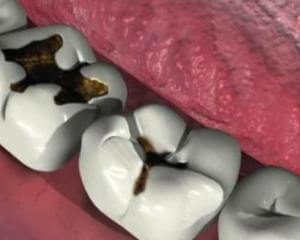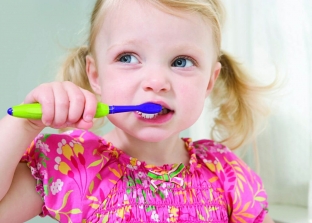No matter how hard loving parents try to protect their child from health problems, the environmental situation, pollution of water bodies, and children's passion for sweets lead to significant problems in the oral cavity. Among such problems in the first place is caries of milk teeth in children. Damage to the enamel of the molars or incisors occurs for many reasons and necessarily requires urgent treatment by a dentist.
In childhood, when carious bacteria enter the oral cavity, they multiply very quickly and affect healthy teeth. Literally in 2-3 weeks, the white and beautiful teeth of the baby are destroyed, blacken, and this process primarily affects the emergence of permanent teeth. Do not delay the treatment of caries in children, because getting rid of this disease at an early stage is much easier than in an advanced case. Consider the features of the treatment of caries according to the stages of the development of the disease.
Things to consider when treating caries in primary teeth
Not all parents pay attention to the condition of their children's milk teeth and go to the dentist if they detect deviations in the color of the tooth or the child complains of toothache. Such a cold-blooded attitude to the treatment of milk incisors in children is explained by the rapid change of permanent teeth. This delusion of parents will cost the baby problems with digestion and other infectious diseases. Eventually, decayed teeth will still need to be filled or even removed.
Dentists say that the treatment of children's teeth is simply necessary to save them until the eruption of the permanent ones. If the doctor has identified the spread of caries so far only at the initial stage, treatment may be limited to applying a protective varnish on the teeth or silver. In the case of the second or third stage of the development of the disease, surgical removal of part of the tooth and filling will be required. If caries has led to significant tissue destruction and has penetrated deep into the pulp, this can lead to the development of pulpitis in a child or even periodontitis.
Read also: Pediatric dentistry: main problems and solutions
Peculiarities of dental treatment in children:
- the dentist removes the affected area on the tooth with a drill, while often interrupting to distract the child;
- the dentist tells parents about the indications and contraindications of anesthesia for the child, anesthetizes the area where the injection is planned with the gel – anesthesia is indicated for nerve removal;
- for filling, the doctor uses special quick-drying materials to form a filling at one time;
- if it is necessary to fill the canals, they are filled with a special paste;
- treatment procedure should not last longer than 30 minutes;
- if dental treatment is required for a very young child, it is indicated to perform manipulations under general anesthesia (parents should weigh the pros and cons of this method).
Treatment of caries in children according to the stages of the development of the disease
Caries at the initial and superficial stages
When bacteria have just begun to attack the enamel, and a small white spot appears on the tooth, the treatment takes place without a drill. The tooth is treated with a fluoride varnish or gel to prevent the spread of infection. In addition, dentists prescribe a course of vitamins and minerals, recommend additional strengthening of tooth enamel with the help of ointments and gels.
Medium and deep caries
 If the disease has spread to the dentin (bone tissue of the tooth), a drill will need to be used to drill out the affected areas. Whether or not to use anesthesia during drilling is up to the dentist, depending on the extent of the lesion.
If the disease has spread to the dentin (bone tissue of the tooth), a drill will need to be used to drill out the affected areas. Whether or not to use anesthesia during drilling is up to the dentist, depending on the extent of the lesion.
Oral hygiene: what to do for parents and children, how a doctor can help
To protect the child from caries and other possible problems in the oral cavity, already with the appearance of the first teeth, the baby should have another game called "Clean mouth and teeth". Parents, setting an example, teach the baby to use a toothbrush and properly brush his teeth, spit out the paste and rinse his mouth. Naturally, in one day the baby will not be able to learn how to clean the molars, not to swallow the paste and rinse the mouth. But every day this skill will improve. Bacteria multiply on the teeth within 12-14 hours, so it is better to brush your teeth 2 times a day.

Professional help it is extremely necessary for parents at the stage of eruption of the first teeth – the doctor advises how to properly clean the teeth from plaque, what strengthening pastes to use.
When the baby has erupted the entire set of teeth (20 pieces), the dentist should examine the child every 6 months in order to prevent the development of caries in time. If family members have bad teeth and the child has inherited fragile enamel, it is worth visiting a doctor every 3 months. In childhood, dental diseases develop very quickly.
Treatment of caries in children – this is a laborious process that requires widespread control by parents, dentists, medical staff in kindergarten (if the child attends it). Only complex actions aimed at the treatment and prevention of dental problems can save the baby's milk teeth.






Add a comment